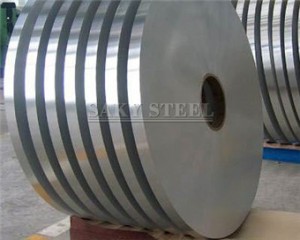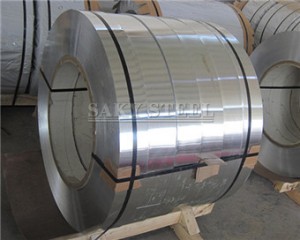Grade 316L stainless steel strips are extensively utilized in the production of continuous spiral finned tubes, primarily due to their exceptional performance in resisting corrosion and chemicals.
These stainless steel strips, made of 316L alloy, exhibit superior resistance to corrosion and pitting compared to chromium-nickel stainless steels like 304. 316L is essentially a low-carbon version of 316 stainless steel.
316L stainless steel strips find widespread application in the engineering, fabrication, and construction industries, mainly for their corrosion resistance. These strips are often manufactured from other stainless steel grades but are designated as 316L to distinguish them from standard 316.
Fabricators appreciate 316L stainless steel for its crack resistance after welding, making it an excellent choice for constructing structures used in continuous spiral finned tube applications.
What Are 316L Stainless Steel Continuous Spiral Finned Tubes?
316L stainless steel continuous spiral finned tubes are a critical component of heat exchanger equipment. They operate by using a refrigerant to cool a heat medium or air. Finned tubes consist of tubes with fins attached to the outer surface.
The primary purpose of spiral finned tubes is to enhance heat transfer efficiency. They achieve this by adding fins to the base tube, which increases the heat exchange area. These tubes can transfer heat using either high-temperature steam or hot oil for heating or low-temperature water for cooling.
316L stainless steel continuous spiral finned tubes effectively use their fins to maximize the surface area where the fluid inside the tube comes into contact with the fluid outside, facilitating efficient heat exchange.
How Is 316L Stainless Steel Strip Used in Continuous Spiral Finned Tubes?
316L stainless steel strips are predominantly used in industrial heat exchangers and various home applications. Examples of applications include air heat exchangers such as evaporator coils for air conditioning units and car radiators.
Car radiators function to cool hot water in the fin tubes using airflow in a cross-flow pattern, while evaporator coil air conditioners are responsible for cooling the air that passes through them. Heat exchanger finned tubes are also utilized in various industrial settings.
Why Use 316L Stainless Steel Strip for Continuous Spiral Finned Tubes?
316L stainless steel strip is an ideal choice for manufacturing stainless steel continuous spiral finned tubes due to several advantages:
- Corrosion Resistance: 316L offers superior corrosion resistance compared to 304 stainless steel, making it well-suited for continuous spiral finned tubes. It can withstand corrosion even in warm chloride environments.
- Physical Properties: With a density of 8,000 kg/m3, 316L stainless steel is well-suited for high-temperature applications, making it an excellent material for manufacturing continuous spiral finned tubes.
- Heat Resistance: 316L stainless steel can withstand annealing and rapid cooling, and it exhibits excellent resistance to oxidation at temperatures of up to 925°C.
In conclusion, 316L stainless steel strip is an excellent choice for continuous spiral finned tubes, offering exceptional corrosion resistance, favorable physical properties, and high heat resistance. When selecting 316L stainless steel strips for your continuous spiral finned tube production, consider factors such as tolerance, material quality, and edge sections to ensure they meet your specific requirements and needs.
Post time: Sep-12-2023

